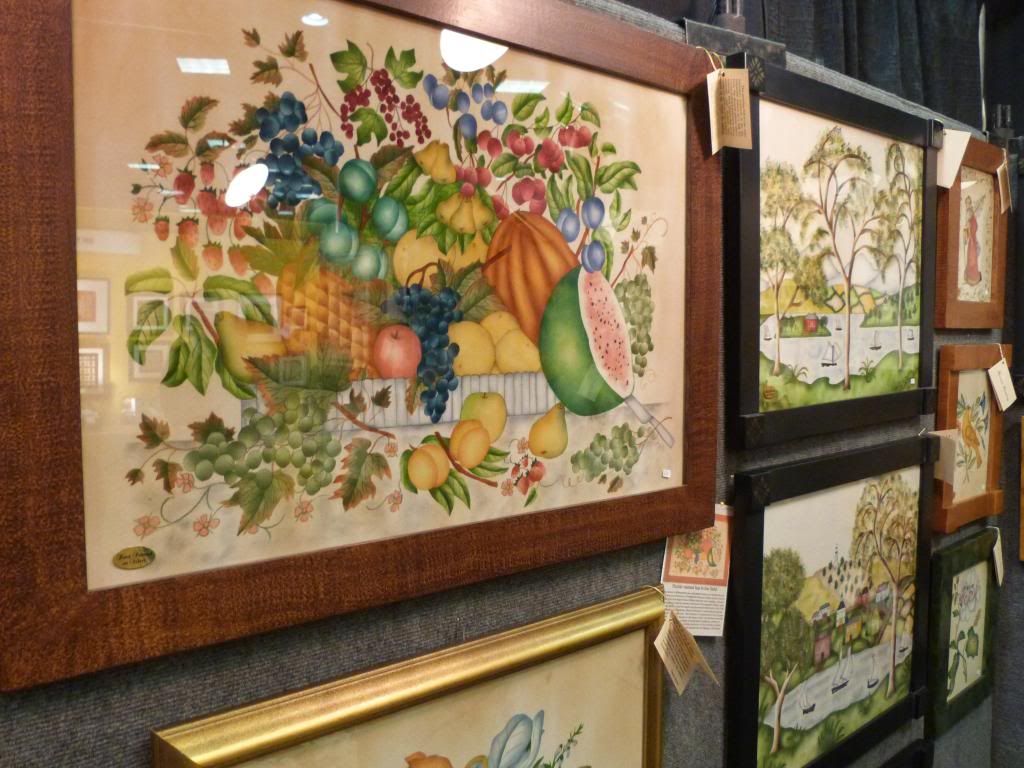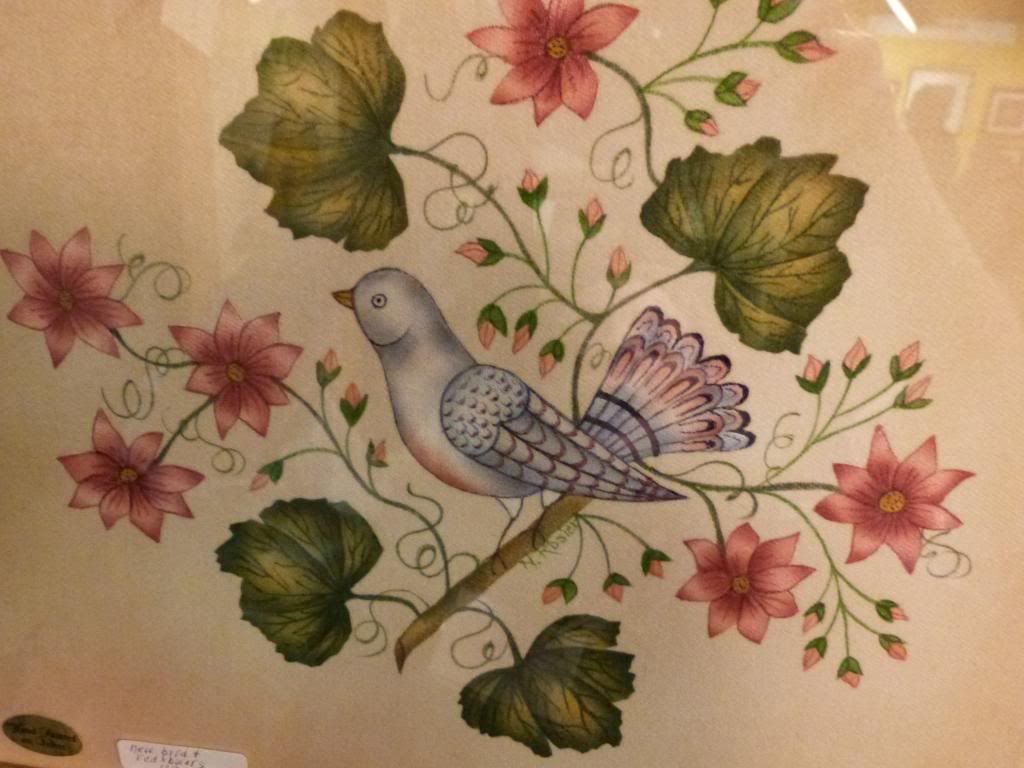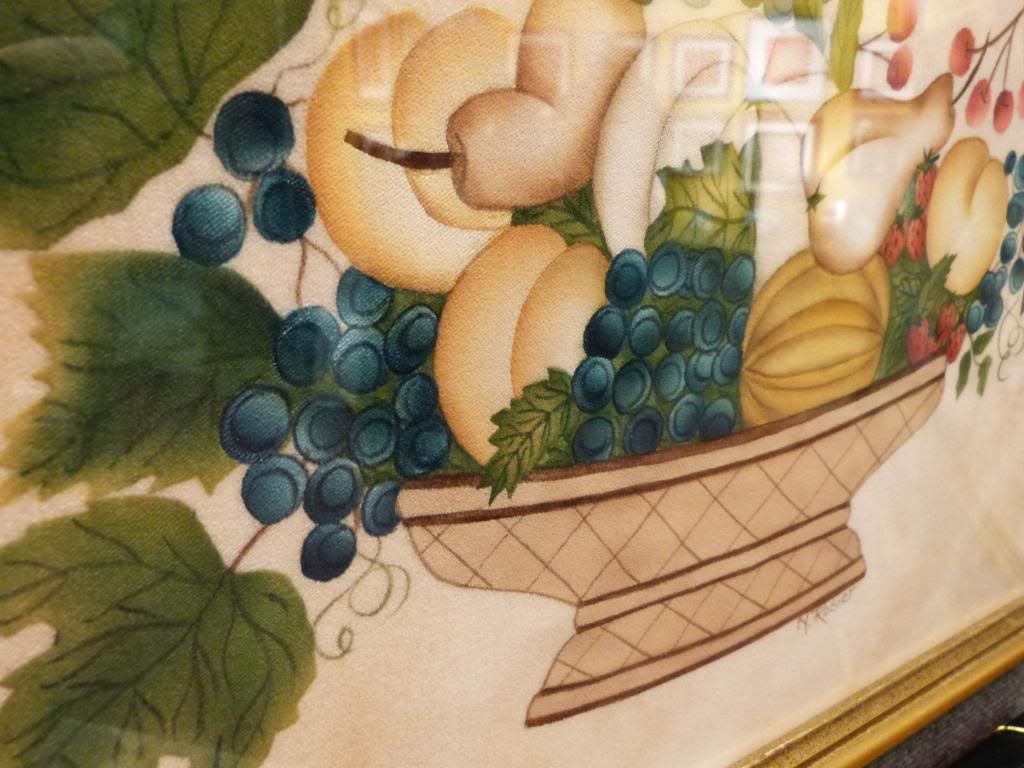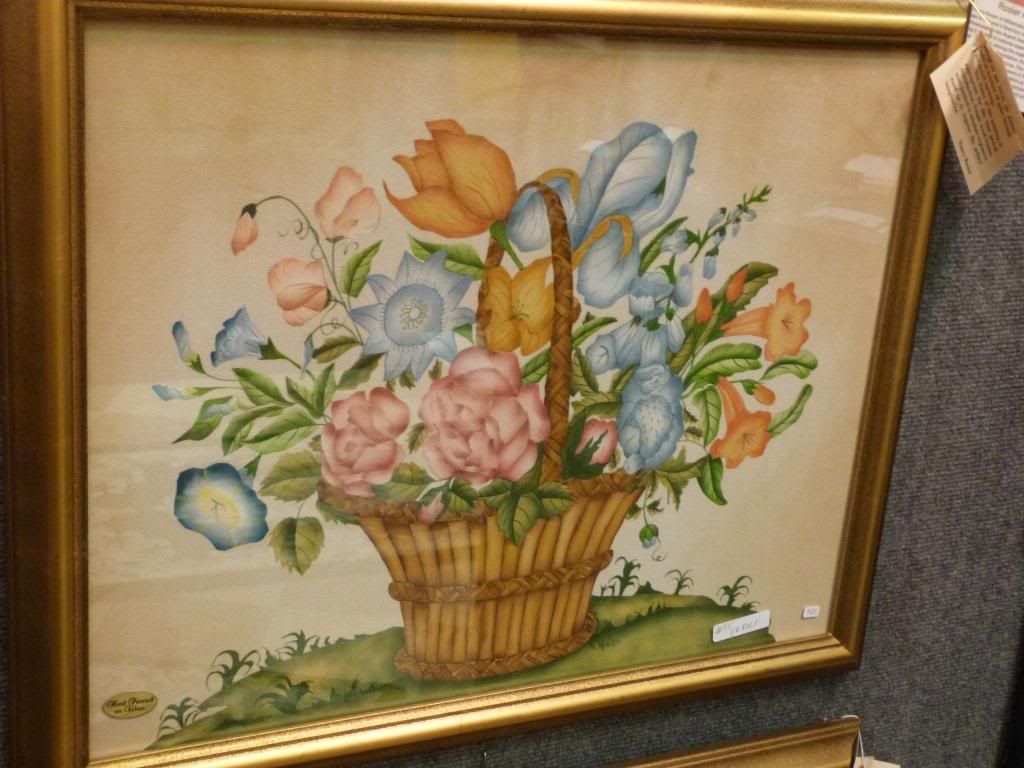For 30 years folk artist Nancy Rosier of Rosier Period Art has dedicated her life to the preservation of a dying and disappearing art form from the early to mid-1800’s – theorem painting.

Theorem painting is the art of making stencils and using them to make paintings on fabric (Nancy uses an egg-shelled colored velvet cotton). Popular during the 1800’s, theorem painting was taught to women in academics and boarding schools in Colonial New England. The appeal of the genre lay in the fact that it allowed the non-professional artist to create a work of art that was acceptable enough to display. It derived its name from the definition of the word – “an expression of relations in an equation or a formula”, according to Webster’s New World Dictionary.
Every one of Nancy’s paintings starts the same way – with a black and white line drawing that she will turn into a stencil to use during the painting phase. These drawings are always drawn freehand, even when she is reproducing a period painting.

When she is ready to begin painting, Nancy doesn’t use the typical brushes one would expect a painter to use. She uses a piece of the cotton velveteen over her finger, though she does go back over the painting at the end with a detail brush to add defining outlines as needed.
But Nancy does stop there, to have total artistic control over how her paintings are presented she has learned several traditional decorative art techniques she uses to paint the handmade frames for her theorems. (Her husband even constructs the frames for her to use.)
In true folk art style, Nancy is self-taught – she has learned her craft through studying antique theorems and reproducing them. She became so accomplished at the historical reproductions that she was commissioned and provided Colonial Williamsburg with thirty-three large paintings, which hang in the public and private spaces of the Williamsburg Lodge.




After spending some time mastering the reproduction of 19th-Century theorems, she began to branch out to include her own original designs.
Her work clearly speaks for itself.
Nancy has been selected each year for close to twenty years as a member of the nationally acclaimed “Directory of Traditional American Crafts” which showcases America’s finest artisans who are dedicated to preserving the early American crafts. Her work was among the few artists asked to contribute their art to decorting the Christmas White House during the Clinton administration.
